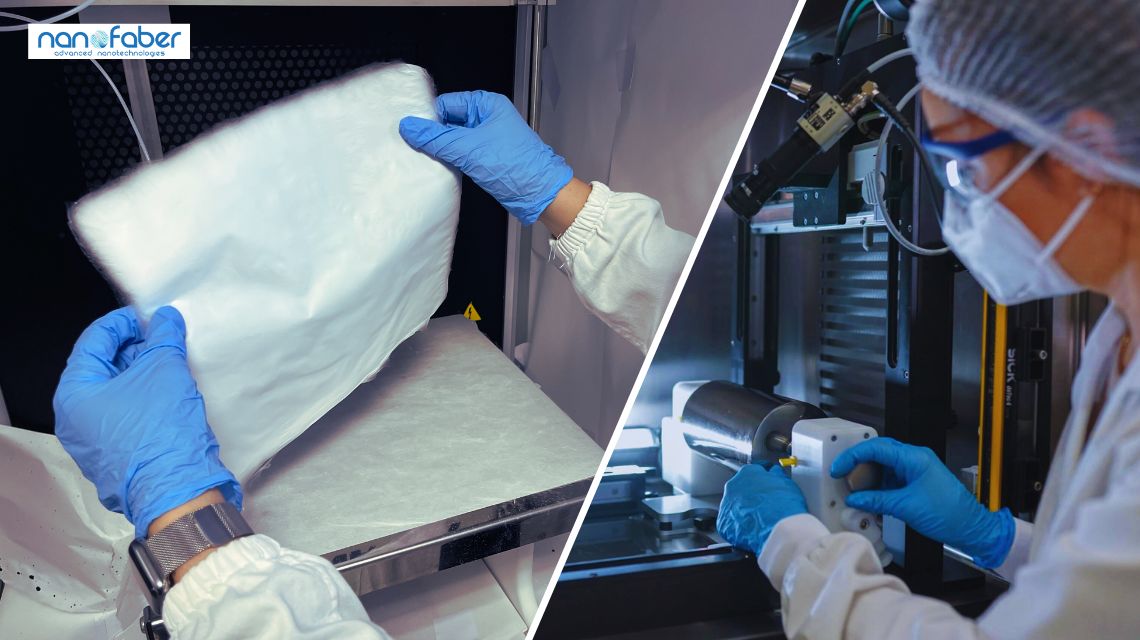Italian National Agency for New Technologies, Energy and Sustainable Economic Development

Health: From ENEA and Nanofaber a wound healing biodegradable patch
A biodegradable patch treating wounds thanks to a patented ointment embedded into its nano fibers has been developed by ENEA and Nanofaber, an ENEA spin-off, with the aim of reducing the frequency of dressing changes and, consequently, pain and the risk of infections. The outcomes of the innovative research were published in the magazine “Pharmaceutics”.
“This multilayer, biocompatible and biodegradable patch was fabricated using an innovative technique called electrospinning, a technique used in both the industrial and scientific fields to create nanofibrous membranes which incorporate therapeutic agents, allowing controlled release over time once in contact with the wound", explained Antonio Rinaldi, ENEA researcher and co-founder of Nanofaber.
The patch consists of two external layers made of a biocompatible synthetic material used in the medical field while an internal layer contains an ENEA patented plant-derived ointment made up of Neem oil and oily extract of St. John's Wort flowers[1], which regenerates wounded tissue.
“In order to maximize the regenerative properties of the ointment or simply expand its field of applications, we have studied innovative approaches to control its gradual and optimal release with respect to tissue regeneration phases”, explained Anna Negroni, researcher at the ENEA Laboratory of Biomedical Technologies.
“The collaboration with Nanofaber – she said – marks a leap forward in the evolution of biomedical patches, preserving the therapeutic properties of the ointment and ensuring better bioavailability through gradual release, for a more effective wound healing management. We should shortly conduct a preclinical trial to assess its in vivo efficacy."
“With this patch we managed to satisfactorily combine the therapeutic properties of the ointment with nano - and micro-structured systems obtained through additive manufacturing, which has allowed us to extend its applications and augment its therapeutic efficacy,” pointed out Antonio Rinaldi.
To verify the encapsulation and release efficiency of the active ingredient by the patch, the researchers performed accurate spectroscopic and chromatographic investigations. Therapeutic efficacy was assessed through in vitro biocompatibility, cytotoxicity and cell migration tests. The results show that the electrospun fibers loaded with the ointment do not affect cell viability but improve wound healing efficacy, as demonstrated by the scratch test, which simulated the presence of a wound on a monolayer of cells, induced by scratching the tissue.
“We found that cells grown on the membrane containing the embedded ointment healed the wound faster than those on the empty one. The development of the scratch test conducted in the study is also an outcome of the research, since it enabled us to obtain an in vitro wound healing model to conduct a time-lapse study of potential general interest for bioengineering and biotechnology ”, concluded Anna Negroni.
Photos and videos
Other archive videos, freely reproducible, are available on request.
